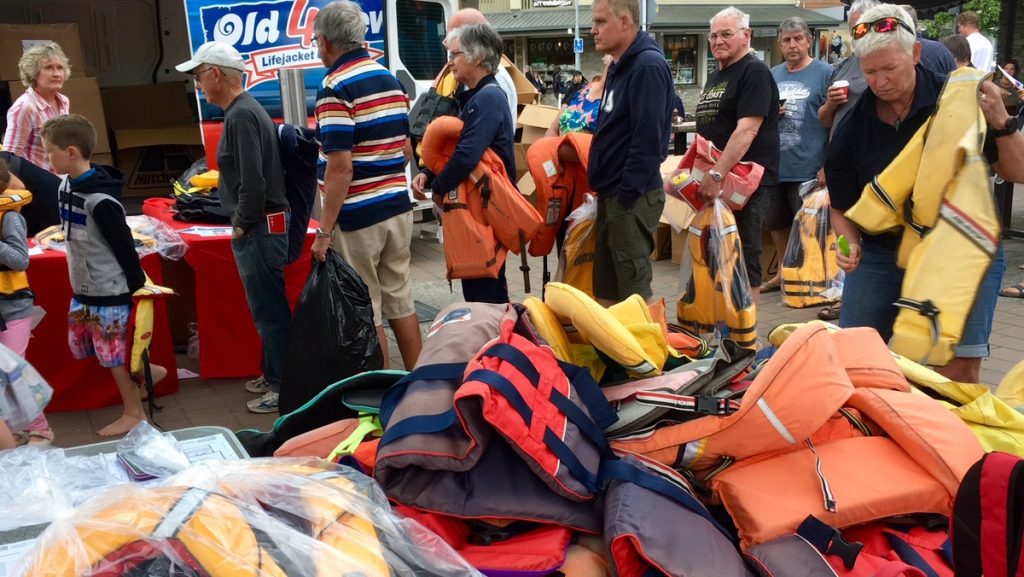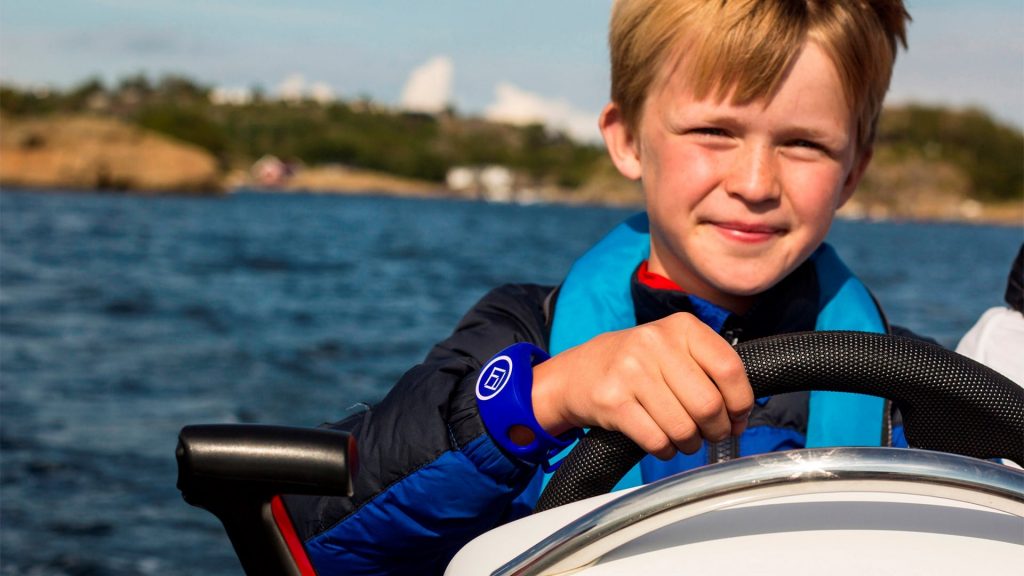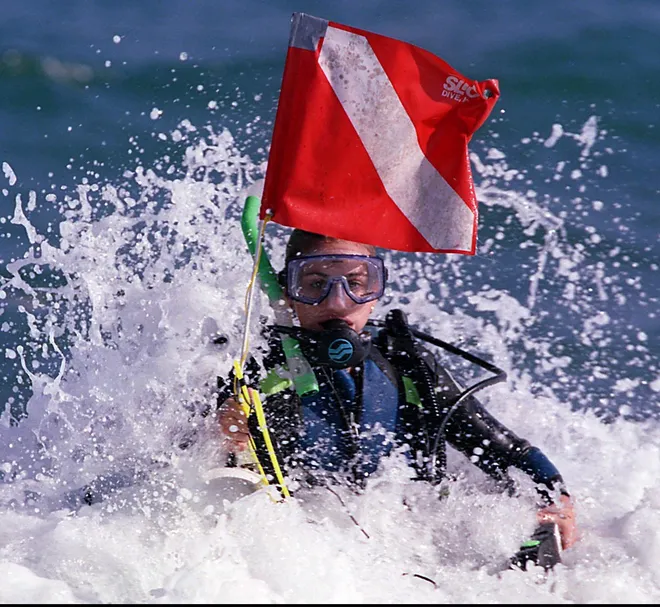PFDs on a Boat Must Be Readily Accessible: Best Storage Methods for Quick Retrieval
Personal flotation devices (PFDs) are vital for boat safety. They can save lives in emergencies. PFDs should be stored in open areas that are easy to reach, such as on deck or in unlocked compartments near seating areas. This makes them quickly available when needed.

Good storage spots include hanging PFDs on hooks or pegs near the cockpit. Another option is keeping them in open bins or baskets close to where people sit.
Some boats have special racks or shelves made just for PFDs. These are great choices too.
It's important to avoid storing PFDs in locked spaces or hard-to-reach places. Don't put them under seats or in closed cabinets. The goal is to grab a PFD fast if someone falls overboard or the boat has trouble.

Key Takeaways
- Store PFDs in open, easy-to-reach areas on the boat
- Avoid locked or hard-to-access storage spots for PFDs
- Choose storage methods that allow quick access in emergencies
Understanding Personal Flotation Devices
Personal flotation devices (PFDs) are crucial safety equipment for boating. They come in different types and must be properly sized for each person on board.
Types of PFDs
There are five main types of PFDs approved by the U.S. Coast Guard. Type I PFDs offer the most buoyancy and are best for open waters.
Type II and III PFDs are more comfortable for everyday use on calmer waters.
Type IV PFDs are throwable devices like ring buoys. Type V PFDs are special-use devices for specific activities.
Each type has different features and uses. It's important to choose the right one for your boating situation.

Selecting the Right PFD
Proper fit is key when selecting a PFD. It should be snug but not too tight. Check the label for weight and chest size ranges.
For children, choose a PFD based on their weight. Make sure it fits snugly and doesn't ride up over their face when in the water.
Consider the activities you'll be doing. Some PFDs are designed for specific water sports. Look for U.S. Coast Guard approval on all PFDs.
Test your PFD in shallow water to ensure it provides enough buoyancy. Replace PFDs that show signs of wear or damage.
Legal and Safety Requirements
PFDs are crucial safety equipment on boats. The U.S. Coast Guard sets rules for their use and storage. These laws aim to prevent drowning and save lives.
U.S. Coast Guard Regulations
The Coast Guard requires all recreational vessels to have one PFD per person on board. Boats over 16 feet must also carry a throwable device, like a buoy. PFDs must fit properly and be in good condition.
Children under 13 must wear PFDs when on deck of moving boats. Some states have stricter rules for PFD wear, especially in rough water conditions.
The Coast Guard can fine boaters who don't follow these rules. They may also end a trip if a boat lacks proper safety gear.
PFD Usage and Accessibility Laws
By law, PFDs must be "readily accessible" on boats. This means they should be easy to grab in an emergency. Keeping PFDs in locked storage or still in plastic wrap is not allowed.
The best storage spots are:
- In open bins near seating areas
- Hung on hooks in the cabin
- On deck in waterproof bags
Wearing PFDs at all times is safest, especially in bad weather or rough seas. Some activities, like water skiing, require PFD use by law.
Boaters should check local laws, as rules can vary by state and water body. Regular PFD checks ensure they work when needed most.
Best Practices for PFD Storage
Proper storage of personal flotation devices (PFDs) on boats is crucial for safety. The right methods ensure PFDs are easy to reach and stay in good shape.
Accessibility and Visibility
PFDs should be stored in open areas on the top deck of the boat. This makes them easy to grab in emergencies. Avoid putting PFDs in locked or closed compartments.
Under-seat storage can work well on smaller boats with limited space. Some boats have special racks or hooks for PFDs near the helm or seating areas.
Keep PFDs in bright colors or with reflective tape. This makes them easier to spot quickly.
For each passenger, assign a specific spot for their PFD. Label these spots clearly.
Maintenance and Care of PFDs
Check PFDs regularly for damage or wear. Look for rips, tears, or broken straps. Replace any PFD that shows signs of damage.
Clean PFDs with mild soap and water. Rinse thoroughly and let air dry. Don't use harsh chemicals or put PFDs in a dryer.
Store PFDs in a cool, dry place when not in use. Avoid direct sunlight, which can fade and weaken the material.
Most PFDs last about 10 years with proper care. Keep track of when you bought each PFD and replace as needed.
Test PFDs yearly to make sure they still float well. If a PFD seems less buoyant, it's time for a new one.
Selecting Storage Methods
Proper storage of PFDs on a boat is crucial for safety. The best methods keep PFDs easy to reach while protecting them from damage.
Fixed Storage Solutions
Wall-mounted hooks or racks offer quick access to PFDs. These can be installed near the cockpit or on cabin walls. Avoid putting them in closed compartments or far from passenger areas.
Open shelves work well too. Place them at eye level for easy spotting. Make sure they're secure so PFDs don't fall off in rough water.
Some boats have built-in PFD lockers. These should be clearly marked and never locked. The top deck is a good spot for these lockers.
Portable Storage Options
Mesh bags are a popular choice for PFD storage. They allow air flow and prevent mold. Hang these bags in visible spots around the boat.
Plastic bins with drain holes can hold multiple PFDs. Keep these bins out in the open, not hidden away.
Avoid storing PFDs in sealed plastic bags. This can trap moisture and cause mildew.
For small boats, a waterproof duffel bag works well. Place it where anyone can grab it fast in an emergency.
Remember, the best storage keeps PFDs dry, visible, and easy to grab. Never put them in locked areas or hard-to-reach spots.
Usage in Various Boating Scenarios
PFDs are vital safety gear for different types of boating. Their proper storage and use depend on the specific water conditions and activities.
Calm Inland Waters
On calm lakes and rivers, easy access to PFDs is key. Keep them in open areas of the boat where everyone can grab them quickly.
For fishing trips, store PFDs near seats or in central locations.
When water skiing, the skier should wear a PFD designed for high-speed water sports. Other passengers need PFDs within arm's reach.
For kayaking and canoeing on flat water, wearing a PFD is safest. If not worn, secure PFDs to the craft where they won't fall out.
Challenging Water Conditions
In rough waters or the ocean, wearing PFDs at all times is crucial. Choose PFDs rated for offshore use with higher buoyancy.
For whitewater kayaking or rafting, wear PFDs made for swift water. These have extra buoyancy and allow arm movement.
On personal watercraft, riders must wear PFDs. The best storage is on your body. Rough conditions call for impact-rated PFDs that can handle high-speed falls.
Sailboats in choppy seas need PFDs stored near the cockpit or on deck. This allows quick access if someone goes overboard.
Innovative PFD Designs and Features
New PFD designs make them more comfortable and safer to wear. Inflatable models offer slim profiles, while built-in safety features give extra protection.
Inflatable PFDs
Inflatable PFDs are slim and light when not inflated. They puff up with air when needed. This makes them comfy to wear all day on a boat.
Many inflate on their own if they touch water. Others need the wearer to pull a cord. Some can be blown up by mouth as a backup.
Inflatable PFDs come in bright colors like orange or yellow. This helps people spot them in the water. They often have a crotch strap to keep them in place.
Integrated Safety Features
Modern PFDs have special parts to keep people safe. Some have whistles to call for help. Others have lights that turn on in water.
Reflective strips make PFDs easy to see at night. Some have pockets for flares or radios. Mesh panels help the PFDs dry fast and stay cool.
Makers focus on a snug fit. This keeps the PFD from riding up. It also helps keep an unconscious person's face out of the water.
Child PFDs often have head supports. These keep a kid's head up if they fall in. Grab handles make it easy to pull a child from the water.
Preparing for Emergencies
Proper PFD storage and quick access are crucial for boating safety. Making sure everyone on board can easily find and use lifejackets helps prevent tragedies in emergency situations.
Quick-Access to PFDs
PFDs must be kept where anyone can grab them fast. Store lifejackets in open areas of the boat, not locked away.
Good spots include under seats or hanging on hooks. Avoid stuffing PFDs in hard-to-reach places like storage lockers.
At night, keep PFDs near lights or glow sticks. This helps locate them in the dark.
Some boaters attach whistles or reflective tape to PFDs. These extras make the devices easier to find and use.
Practice putting on lifejackets while on the water. This builds muscle memory for emergencies.
Make sure everyone knows where PFDs are stored before leaving shore.
PFDs for Non-Swimmers and Children
Non-swimmers and kids need extra care with PFDs. Choose brightly colored lifejackets for better visibility.
Fit is key - PFDs should be snug but not too tight.
For children, use PFDs with head support and crotch straps. These keep little ones face-up in the water.
Store kids' PFDs where they can reach them without help.
Test PFDs in calm, shallow water. This builds trust and comfort.
Teach non-swimmers how to float using their PFD. Show them how to relax and let the device do its job.
Keep a throwable flotation device ready for rescues. A life ring or cushion works well.
Practice tossing it to a target to improve aim and speed.
Size and Fit Considerations
Choosing the right size PFD is key for safety on boats. A proper fit ensures the device works as intended in an emergency.
Measuring for the Correct Fit
PFD sizing is based on weight and chest size. Adults should measure their chest at its widest point.
For children, both weight and chest size matter.
Most adult PFDs fit chests from 30 to 52 inches. Larger sizes are available for bigger users.
Child PFDs are sized by weight ranges, typically starting at 8-30 pounds for infants.
To check the fit, put on the PFD and tighten all straps. Raise your arms above your head. The device should not ride up past your chin or ears.
Adjusting PFDs for Different Users
PFDs often have adjustable straps to fit various body types. Tighten or loosen these straps for a snug but comfortable fit.
For children, look for a crotch strap to prevent the PFD from slipping off. Some models have extra foam panels that can be added or removed.
Test the PFD in shallow water. It should keep your head above water and allow you to swim.
If it doesn't, try a different size or style.
Remember, a loose PFD can slip off in the water. But a too-tight one can be uncomfortable and might not be worn. Find the right balance for safety and comfort.
Legal Liability and Compliance
Boat owners face serious legal and safety obligations regarding PFDs. Proper storage and accessibility of life jackets is crucial for compliance and preventing tragedies.
Boating Laws and Owner Responsibilities
The U.S. Coast Guard requires all recreational boats to have accessible PFDs for each person on board.
Owners must provide the right number, size, and type of Coast Guard-approved life jackets. PFDs must be in good condition and within easy reach.
For boats under 16 feet, wearable PFDs are required. Children under 13 must wear PFDs on moving boats in most states.
Inflatable PFDs don't count for required PFDs on these smaller vessels.
Owners are responsible for knowing and following all PFD laws. This includes rules about storage, accessibility, and use.
Failing to comply can lead to fines and legal issues.
Consequences of Non-Compliance
Not following PFD laws can result in steep fines. More importantly, it puts lives at risk.
Drowning is the leading cause of boating fatalities. Many deaths happen when PFDs aren't worn or can't be reached quickly.
If an accident occurs and proper PFDs weren't provided, the boat owner may face:
- Criminal charges
- Civil lawsuits
- Loss of boating privileges
- Higher insurance rates
Courts often find owners liable in drowning cases where PFDs weren't accessible. The legal and financial consequences can be severe. But the loss of life is the true tragedy that proper PFD compliance aims to prevent.
Frequently Asked Questions
PFDs are crucial safety equipment on boats. Proper storage and usage are key for effectiveness in emergencies. Knowing the types and requirements helps ensure compliance and safety.
Which type of PFD will turn most unconscious people face up in the water?
Type I PFDs are designed to turn most unconscious wearers face-up in the water. These offshore life jackets offer the most buoyancy and are best for open, rough, or remote waters.
What is the main advantage of a Type IV PFD?
The main advantage of a Type IV PFD is that it can be thrown to someone in the water. These are not worn but are designed to be tossed to a person who has fallen overboard.
Which U.S. Coast Guard-approved equipment is required for all vessels?
All vessels must carry U.S. Coast Guard-approved PFDs. The number and type depend on the boat's size and number of passengers.
Which PFD is designed to be thrown to someone in the water?
Type IV PFDs are designed to be thrown to someone in the water. These include ring buoys and cushions that can provide temporary floatation to a person in distress.
What determines how many wearable PFDs are required on board a vessel?
The number of people on board determines how many wearable PFDs are required. There must be one Coast Guard-approved wearable PFD for each person on the vessel.
Where is the best place to store PFDs on a boat?
The best place to store PFDs on a boat is in an easily accessible location. They should be kept where anyone can grab them quickly in an emergency. They should not be locked away or hidden.
Charlie is Editor-in-Chief of Sea Magazine







